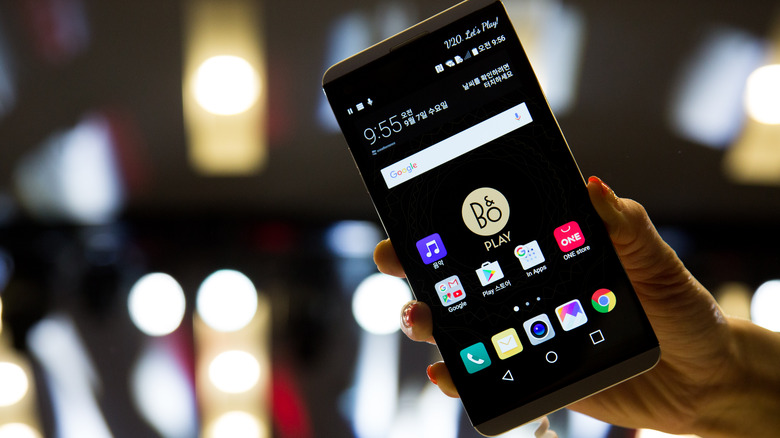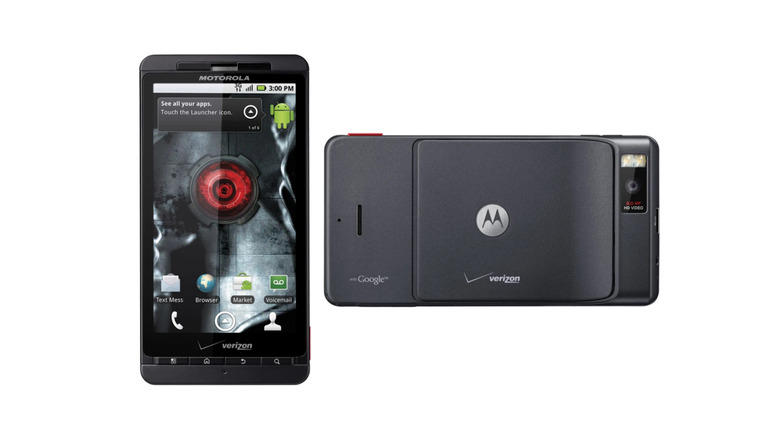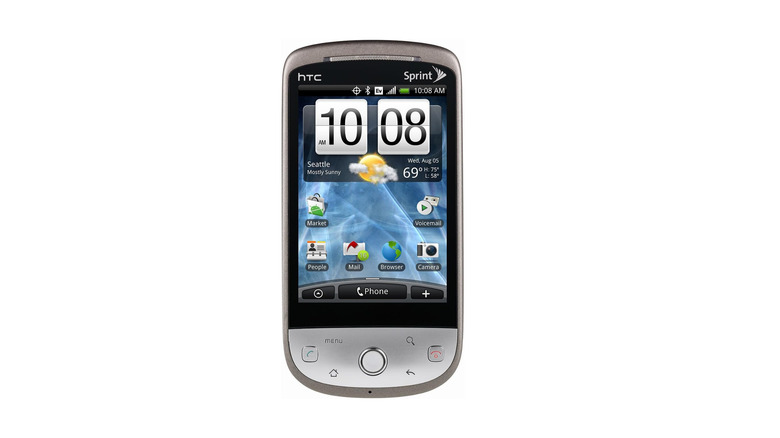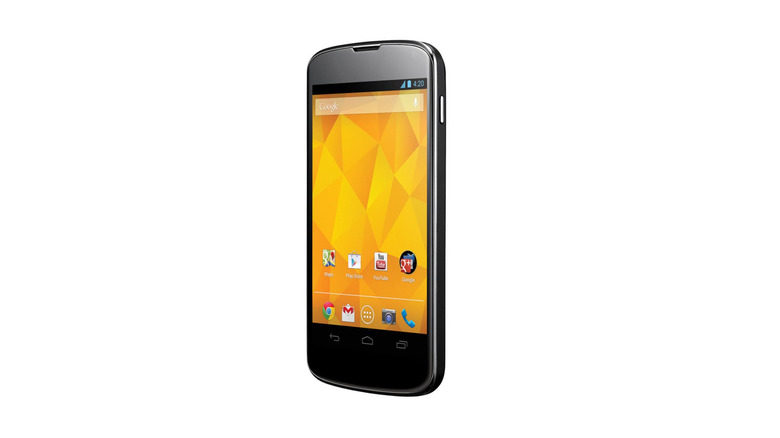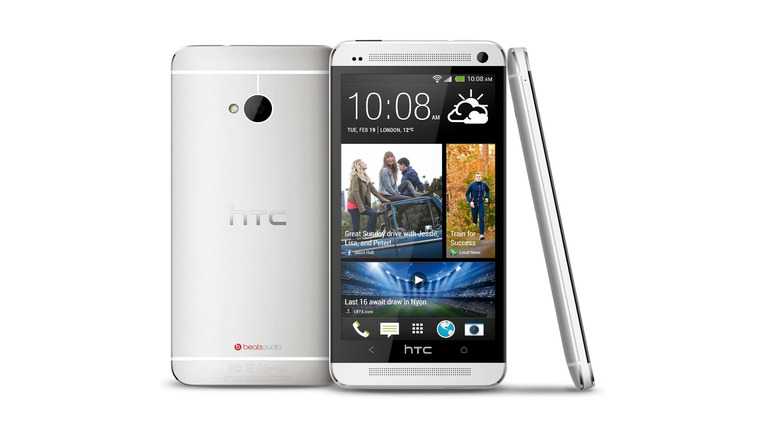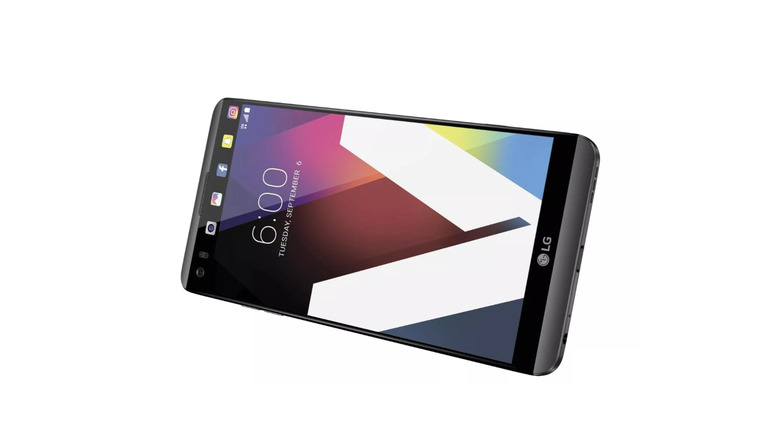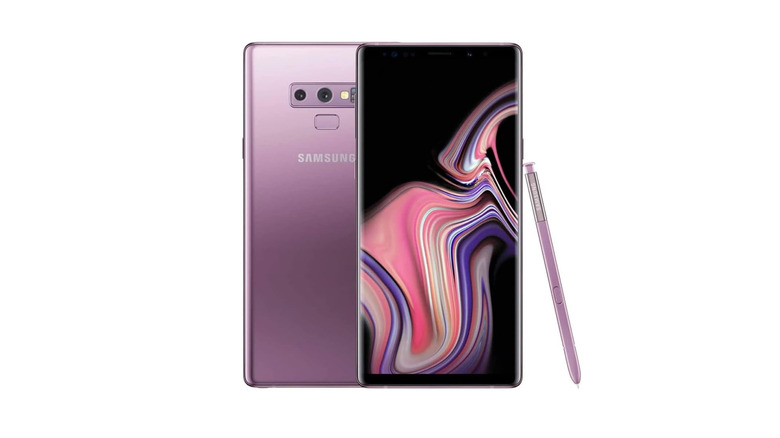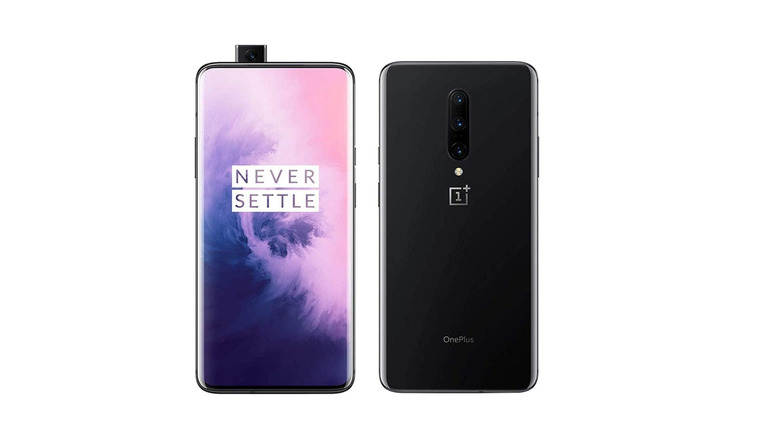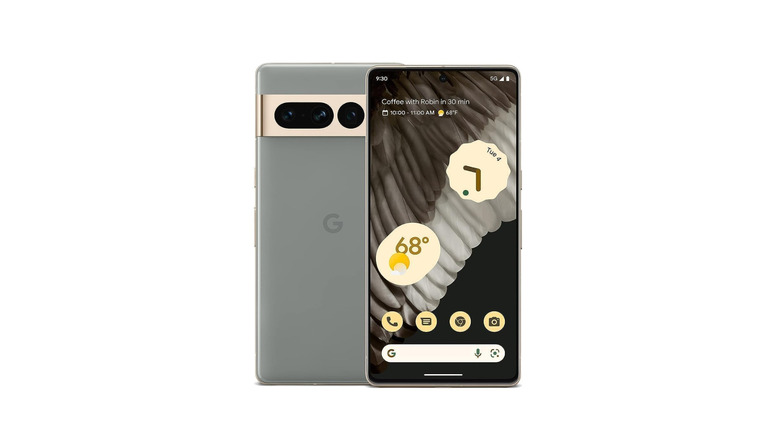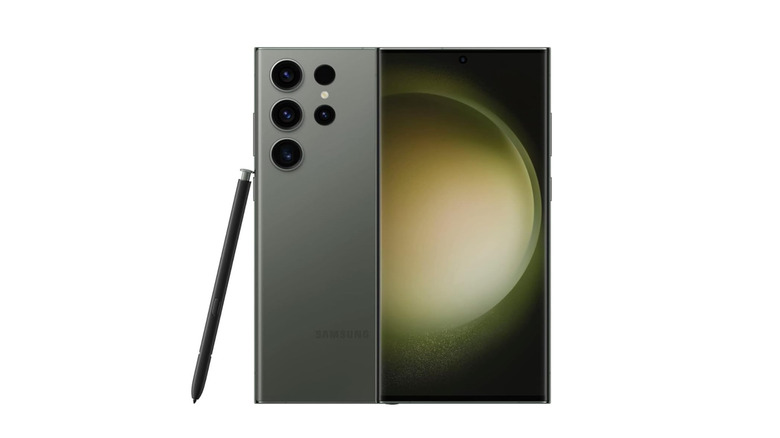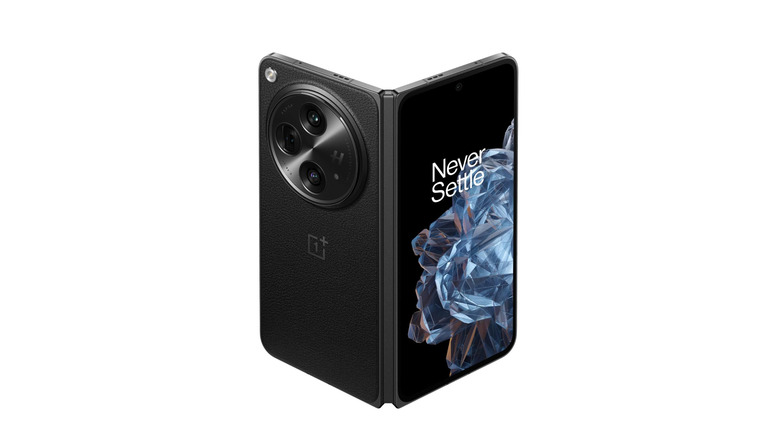10 Of The Best Android Smartphones Ever Released
New phones come and go, but the phones we love stay with us forever and change the way we do things. Sometimes they stay in our hands for longer than we'd anticipate.
We've all experienced this at one point with our smartphones. We're talking about the one phone that has a particular touch that makes us appreciate using it long past its prime, whether it's a specific feature or the fact that the phone's overall strengths outlast the usual upgrade cycle logic. Some of these phones may even continue to be used as an "archive" smartphone we keep on hand for specific uses just because of how it resonated with us.
For this story, we've pulled together 10 of the best Android phones ever released. These phones stand out for how loved they were by users and our reviewers alike. This list is based on SlashGear's reviews and research of how users responded based on popular threads such as Reddit.
Join us on this walk down memory lane to see which phones, past and present, made the cut.
Motorola Droid X
The Motorola Droid X came out in 2010, in the heady early days of Android smartphones. It was Motorola's second-generation flagship phone. Like its Droid predecessor, the Droid X only worked on Verizon's CDMA network, an exclusivity situation that was common at the time.
The original Droid gave Android its first real "name" phone to challenge the Apple iPhone. The Droid X built on that momentum and sense of magic and gave Android the boost it needed to compete with the iPhone. The phone ran Android 2.1, marking an era when Android was in its infancy, and phone makers distinguished themselves with software interface customizations like social media integrations and custom keyboards (including one by Swype, the precursor to dragging your finger across a keyboard to form letters) found on the Droid X.
SlashGear's review noted a protruding hump at the top rear edge necessary to provide room for the phone's then-cutting edge eight-megapixel autofocus camera with dual-LED flash. The phone had proximity sensors, an accelerometer, and a microSD card slot. It included a 16GB card in the box to supplement the 8GB of onboard storage, a power move that let the Droid X leap-frog over the entry-level iPhone 4's memory capacity.
The Droid X also stood out for having three microphones, which came in handy for both noise cancellation and for shooting video.
HTC Hero (Sprint)
At one time, HTC was a major player in the Android phone market. The HTC Hero came out in 2009, the third Android smartphone from HTC. The phone had an interesting journey, coming out first in Europe. Later that same year, it debuted as the HTC Hero in the U.S., where it supported 900/2100MHz HSPA/WCDMA networks and was first available on Sprint. The U.S. versions of the phone were redesigned from the version sold elsewhere, with flatter physical buttons and a smooth bezel that lacks the distinctive "chin" angle of the phone.
This was the first HTC phone to introduce a 3.5-millimeter headphone jack, a welcome addition to a still-new device that was primed for use as an Android music player, too — much as the iPhone quickly became the de facto replacement for Apple's iconic iPod. It was also the first Android phone to support a multi-touch screen, which enabled pinch and zoom motions like those on the Apple iPhone, and the first to integrate a browser with a scaled-down version of Adobe Flash (then a dominant technology for web design and video streaming).
The Hero felt comfortable in hand, and it was thin (for the time), measuring 14.35 millimeters. It even had a trackball to navigate menu options. At the back, the Hero had a five-megapixel camera without a flash. The phone initially shipped with Android 1.5 but then received the Android 2.1 update. That update added some interface tweaks thanks to the HTC Sense user interface, the company's in-house software overlay that made stock Android more inviting visually and easier to customize and use.
Google Nexus 4
The year is 2012, and the Google Nexus 4 is, as its name implies, Google's fourth iteration of its own branded cell phone. Google's prior Nexus phones established the concept of a pure Android experience, delivered on a phone with leading specs and design. These Nexus phones were made for Google by other manufacturers, with the Nexus name connoting its special status as a Google phone that will get Android updates first, before any competitors.
However, as noted in the SlashGear review, the phone landscape was very different for the Google Nexus 4. While it still stood out for its unvarnished Android experience and early-access operating system updates, the Nexus 4 debuted at a time when smartphone competition was heating up.
The Nexus 4 was manufactured by LG, which in turn based the phone's design on its LG Optimus G. It stood out for including an IPS LCD touchscreen with a Corning Gorilla Glass 2 cover layer as well as its inclusion of Qi wireless charging, then a rarity on smartphones. The phone also stood out for its omissions: No 4G LTE and no microSD card slot, which meant you were limited to just eight or 16 gigabytes of storage and whatever you could store in Google Drive.
The phone garnered many fans in its day simply for its strong balance of performance, specs, and price. It was priced at just $199 with a two-year contract for the 16-gigabyte version on T-Mobile. This made it extremely price competitive for its day.
HTC One (M7)
When the HTC One (M7) came out in 2013, HTC needed to make up ground in the smartphone race. Samsung rose to prominence with its popular Galaxy SIII phone in 2012, and Apple continued to lead smartphone conversations with its Apple iPhone 5, also released in 2012.
The HTC One became a go-to for users who appreciated innovation coupled with HTC's software usability. Per SlashGear reviewer Vincent Nguyen's analysis back in 2013, "The HTC One makes a compelling argument for being the best-made Android phone we can recall, a design that both looks and feels premium." It had a gently curved back, which made it easy to hold, and its camera lenses were flush with the back of the phone. The front-facing Beats Audio-powered speakers flanked the top and bottom of the display, with two touch-sensitive keys sitting beneath the display to make it easier to go back and return home without sacrificing precious screen real estate.
The 4.7-inch Full HD 1,980-pixel display struck an appealing balance between size and pixels-per-inch vs. larger five-inch displays of its day, and the choice of a slightly smaller screen made this phone more convenient to hold than competing models. The battery was not removable, though, and the phone lacked a microSD card slot, two features that competing Android phones still commonly supported at this time. It still had an HTC Sense overlay to simplify operation; now, in 5.0, HTC has removed some of the bloat and goofy graphics. This phone also introduced HTC BlinkFeed, its latest attempt at pulling multiple social networks under a single umbrella.
HTC released a version of this phone in 2014 dubbed HTC Google Play Edition M7, which dropped the Sense overlay and later received an Android 5.1 update.
LG V20
One of the last significant phone releases from LG, the V20, made an impact in 2016 as a phone aimed at content creation — long before the creator economy rose to prominence. LG had lucky timing, as the LG V20 came out at a time when Samsung's Galaxy Note 7 had its infamous exploding battery issue, the issue that got the Note 7 recalled. The recall left a void for high-end phones that year, and the V20 was poised well to fill that void.
The LG V20 stood out for its audio and imaging features. SlashGear's V20 review noted: "This smartphone was made for people who want the most premium and unique smartphone on the market, full stop."
For starters, the phone had two displays, one above another, and two displays function separately. The secondary display provides functional shortcuts to apps and operations, and it works to complement an app by providing easy access to settings. The 5.7-inch IPS LCD had 2,560 x 1,440 pixels, or 513 pixels per inch, and it used a Corning Gorilla Glass 4 cover layer.
The V20 also integrated an impressive digital-to-audio converter (DAC), which meant the phone could handle playing lossless 24-bit audio files and CD-quality audio from streaming services like Tidal. These features alone keep this phone useful as a music player. Our review noted audio sounded terrific through earbuds, and the phone could record lossless LPCM audio and 24-bit/192 kHz FLAC audio. You could record in stereo, too.
The rear-facing camera also stood out among the giants of the time. Like the V10 before it, the V20 had two cameras, the main camera and a wide-angle camera. The main camera had 16 megapixels, more than the 12-megapixel main camera on the iPhone 7 Plus.
Samsung Galaxy Note 9
After the debacle that was the recalled Note 7, the Samsung Galaxy Note 9 solidified Samsung's prowess with its Note line. It also reflected Samsung's doubling down on the Note's key distinguishing feature, its S Pen stylus.
The follow-on to the Note 8, the Note 9 stood out as the best Android phone of its time. SlashGear noted in its Note 9 review that "The Note 9 is a supercar smartphone. Like all supercars, you pay handsomely for the privilege of driving a flagship."
While its industrial design was very similar to its predecessor, inside was a completely different story. The phone's specs were updated across the board, with an updated, snappier Qualcomm Snapdragon 845 processor, a beefy 4,000mAh battery, and the addition of Bluetooth to its iconic S Pen stylus. Bluetooth connectivity allowed the stylus to act as a remote control for the camera, music playback, and more.
The Note 9 had a gorgeous large, 6.4-inch Super AMOLED display, and it included a microSD card slot and a maximum of 512 gigabytes of onboard storage. The cameras were solid performers, too, with two 12-megapixel sensors and one with a 2x optical zoom. The camera app also introduced Samsung's Scene Optimizer, the company's first take on AI-driven image capture.
While this phone was a solid performer that was future-proofed in many ways, it was hampered by one critical omission: The phone lacked a 5G radio, which meant it couldn't work at the fastest speeds over the fast wireless networks first coming online at the time. However, it also had a 3.5-millimeter headphone jack (the Galaxy S10/Note 10 series were the last ones to include a headphone jack).
OnePlus 7 Pro
The OnePlus 7 Pro crashed onto the scene in mid-2019, falling between the usual winter flagship Galaxy S launch from Samsung and Samsung's Note launch at the end of the summer. OnePlus first appeared on the scene with good phones at a lower cost than competitors' flagship phones.
With the OnePlus 7 Pro, the company shifted its strategy. As noted in SlashGear's OnePlus 7 Pro review, "the OnePlus 7 Pro is a doorway into the future for the company — a future in which OnePlus is able to offer high-end features in a phone that's every bit as much a hero as the biggest names in the industry."
The phone came in two colors, each with two price points and two memory and storage configurations (a confusing model, to be sure). It had an innovative 6.67-inch AMOLED display with QHD+ resolution and a fast 90Hz refresh rate, better than most competitors at the time. One of its three cameras had an impressive 48-megapixel sensor. The front camera has a unique pop-up design.
OnePlus' OxygenOS is the company's own take on Android, with its interface tweaks to make some tasks easier and reveal capabilities missing from stock Android. For example, you get quick-access settings to a Reading Mode, Zen Mode, and a Screen Recorder, plus a built-in VPN. Like other OnePlus models, the phone has a proprietary fast-charging technology built-in; you need to use the phone's included charger to see the fast-charging benefits.
Google Pixel 7 Pro
By the time the Google Pixel 7 Pro came along in 2022, Google needed to introduce features that made it truly competitive with Apple and Samsung's flagship phones and to do so at an aggressive price. More so than any other Pixel phone before it, the Pixel 7 Pro delivered a premium flagship experience at a not-so-premium price.
In SlashGear's Pixel 7 Pro review, we referred to the phone's $899 price tag as positively aggressive in an age where Apple and Samsung's flagship models cost upwards of $1,000. It didn't take long for the Pixel 7 Pro to get aggressive discounts, making this phone an appealing alternative to the Apple/Samsung duopoly.
This model retained a similar look and feel to the Pixel 6 series before it, with a metal and glass design and a metal bar at the back offsetting the cameras. It has a 6.7-inch OLED screen with up to a 120Hz refresh rate, putting it right up there with other flagship phones and making it a contender for mobile gaming.
The real magic of the Pixel 7 Pro sits inside the chassis. It has Google's second-generation Tensor G2 processor inside. The processor emphasized AI and computational image processing, and with it came even better camera performance, with abilities that "feel like borderline magic," as SlashGear's reviewer put it. The phone is packed with features that make editing and image capture easier and more intuitive than ever. One of the most buzz-worthy (and useful) features was Magic Eraser, which simplified background removal from images. The cameras have received feature updates since release and will continue to get feature and Android system updates until 2025 and security updates until 2027.
Samsung Galaxy S23 Ultra
The Samsung Galaxy S23 Ultra stands as Samsung's last great flagship phone before Galaxy AI (baked into the Galaxy S24 series) made waves. This phone scored a near-perfect rating in our review, and for good reason.
The chassis reflects subtle design changes in the S23 Ultra over its predecessor: It has a more squared-off design and its Corning Gorilla Glass Victus 2 cover layer lacks the rounded edges of earlier iterations. The S Pen parks itself inside the phone, and it remains an appealing and peerless integrated stylus for writing directly on the phone's 6.8-inch Dynamic AMOLED display with its fast 120Hz refresh rate.
The biggest news behind the S23 Ultra lies with the addition of a 200-megapixel camera sensor to the previous 50-megapixel sensor. While this may seem like a gimmick, it worked well to deliver sharp details and rich colors. The rest of the camera array works well to capture brilliant, satisfying images. The default 1X lens uses a 12-megapixel sensor, while the 3X and 10X optical zooms use a 10-megapixel sensor. Samsung includes a version of Adobe Lightroom for shooting RAW images (also available via Samsung's Expert RAW app). The cameras also feature improved night photography and optical image stabilization.
The phone uses a customized Qualcomm Snapdragon 8 Gen 2 processor, and together with the included 12GB of RAM, this phone's zippy performance won't disappoint anytime soon. The only reason to consider upgrading would be if you crave the Samsung Galaxy S24 Ultra's AI experiences — and even then, maybe not, since a few features are scheduled to debut eventually on the S23 Ultra.
OnePlus Open
As the newest phone on this list (released in late 2023), it may seem a bit early to include the foldable OnePlus Open on this list. And yet, we believe this model has serious legs.
The OnePlus Open is OnePlus' first stab at a folding phone, and it scored a hit with its first attempt. The OnePlus Open followed other major 2023 foldables from Samsung and Google. Clearly, OnePlus took notes about what worked, and what didn't, when it came to those phones. Noted SlashGear's reviewer, "The OnePlus Open is an unexpectedly capable phone that arguably delivers the best of both worlds: the inner screen of the Samsung Galaxy Z Fold 5, and the cover screen usability of the Google Pixel Fold."
A significant distinction with this phone is its size. The OnePlus Open is the first folding phone that doesn't look like two phones stacked on top of one another. Instead, this phone and its 2K, 7.82-inch inner display folds up to a device that's barely thicker than a single handset from a competitor. SlashGear's review notes it weighs just five grams more, and stands just two millimeters thicker than the Samsung Galaxy S23 Ultra.
The phone's cameras are competitive, and its roomy screen supports up to three apps open at a time. It comes with 16GB of RAM and 512GB of storage standard, topping competitors' specs and plenty of oomph that, together with its Snapdragon 8 Gen 2 processor, you should get snappy performance for the foreseeable future. The one notable omission, though, is wireless charging. However, most users might not even miss the wireless charging, since the phone supports fast charging over its optional proprietary 80-watt charger and its included 67-watt charger (at lower power, you can charge to 50% in just 15 minutes).
